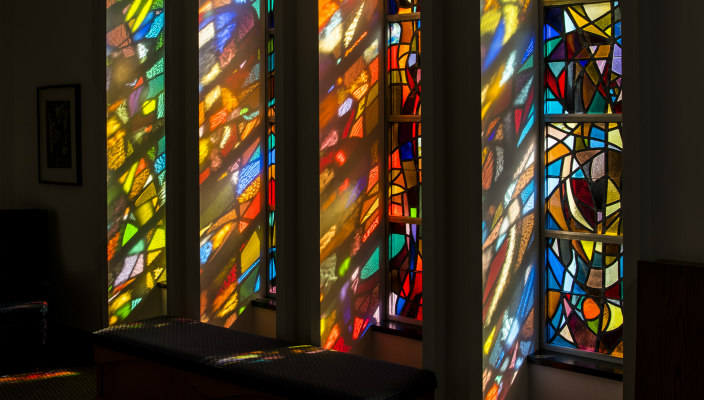
Planning for a clergy transition is always an emotional process – and that’s certainly as true as ever this year. We recently hosted a webinar for congregation undergoing a rabbinic or cantorial transition in summer 2020 to explore the unique challenges that may arise this year.
Here are seven key thoughts to keep top of mind:
1. The principles of transition management still hold true.
The principles of transition management remain integral to your summer 2020 clergy transition. Remember that every transition involves: letting go and saying goodbye to your current clergy member; an in-between neutral zone; and a period of welcoming their successor. Each person in your congregation goes through these stages differently.
It is important to manage not only the change occurring between June 30 and July 1 but also the longer transition that began when news was shared about your rabbi or cantor leaving; it will not conclude until perhaps longer than a year after your new clergy member has begun working in your congregation.
2. Opportunities for saying goodbye and hello are key rituals.
No matter where people are located physically or how they are connecting in community, it is important to provide opportunities for saying goodbye to your current clergy member and saying hello to your new clergy member.
While physically apart, we are all learning new ways to connect socially and emotionally – as a large community, in smaller gatherings, and one-to-one. Although the ways in which you gather have changed, the importance of these gatherings remains essential.
3. Embrace the possibilities of this new reality.
Six months ago, many of us had never heard of Zoom, yet today we are doing everything from studying Torah to meeting for cocktails via Zoom and other online meeting platforms. Many congregations are reporting higher engagement and turnout vis-à-vis their new online opportunities than they have had for many years in their physical buildings.
Even when we can return to our buildings, some congregants will prefer to continue engaging online, for health and/or other reasons. This is an opportunity to rethink the ways you’ve been connecting with your congregation, reinterpreting and re-envisioning the rituals of saying goodbye and hello to touch more people.
4. Be mindful of how this current reality is affecting both your outgoing and incoming clergy.
This is a disconcerting, baffling time for all of us – all the more so for clergy who are leaving and arriving in congregations this summer.
Retiring rabbis and cantors who were planning to spend the coming year visiting family and friends, traveling, or just picking up new hobbies are seeing their plans upended or placed on hold. Arriving clergy are dealing with packing up and moving, sometimes across the country, at a time when most cities, states, and business are shut tight. They’re closing up homes and finding new places to live, often sight-unseen.
Your present clergy are leaving congregations and friends without the opportunity for in-person goodbyes, and your arriving clergy are in the same circumstances with their current communities. As difficult as it is generally to move, finding new childcare, doctors, and grocery stores in a new city are all the more difficult in this time of reduced physical contact, so it is important to be mindful of these additional pressures on your new clergy and to be supportive and understanding of their possible need for additional time and space to orient to their new surroundings.
Also be respectful of (and do not question) requests for accommodations to maintain physical distancing measures beyond what might be considered “normal” for healthy people in your community. Your new clergy member might be immunocompromised, have an immunocompromised family member, or just feel afraid to immediately venture forth into a new community. These are valid concerns they might not feel comfortable sharing.
5. The transition period – and especially the neutral zone – could last longer than usual.
In times of transition, the neutral zone represents the liminal, disorienting time that occurs in the space between “how things were” and “a new sense of comfort.” We are also living in a liminal moment between the world as we knew it pre-pandemic and the world as it will be post-pandemic. Everyone is feeling a certain sense of unsettledness in our lives.
This layering of liminality means congregations should prepare for the adjustment period for clergy, congregational senior staff, and the congregation as a whole to take longer than what might generally be expected. Normally, it can take upward of a year after new clergy arrive for everyone to begin to feel comfortable with new patterns and realignments. Given the upheaval in the larger world today, it may well take closer to 18 to 24 months for that “settling-in” to occur.
6. Don’t be afraid to ask for help and support.
We all realize the importance of being part of a congregational community for support in trying times. Your congregation is part of something larger, too – the Reform Movement. As a Movement, we are here to provide resources and support for our congregations.
Please reach out to any of us: the URJ’s Consulting and Transition Management team, Rabbis Paula Winnig and Janet Offel; the CCAR’s Director of Placement, Rabbi Cindy Enger; and/or the ACC’s Director of Placement, Cantor Kay Greenwald.
Connect with us, and with other congregations, in the Tent group specially created for congregations going through a clergy transition this coming summer, “2020 Clergy Transitions.”
7. Be gentle with yourself and others.
This is a difficult time in all of our lives right now, as individuals and as communities, so remember to be gentle with yourself and with others. As Anne Frank wrote, “In the long run, the sharpest weapon of all is a kind and gentle spirit.” Entering into this new chapter in the life of your congregation, may you lead and be led with a gentle spirit.
To learn more about transition management, request access to the URJ’s Rabbinic Transition Roadmap, a four-module, self-guided resource for congregations undergoing senior/solo rabbinic transitions. You can also join the conversation in the 2020 Clergy Transitions and the Senior/Solo Rabbinic Transition groups in The Tent.
Have something to say about this post? Join the conversation in The Tent, the communications and collaboration platform for congregational leaders of the Reform Movement. You can also tweet us or tell us how you feel on Facebook.
Related Posts

Setting Your Leaders Up For Success

Safety, Equity, and Accountability is the Path to a Thriving Jewish Community
